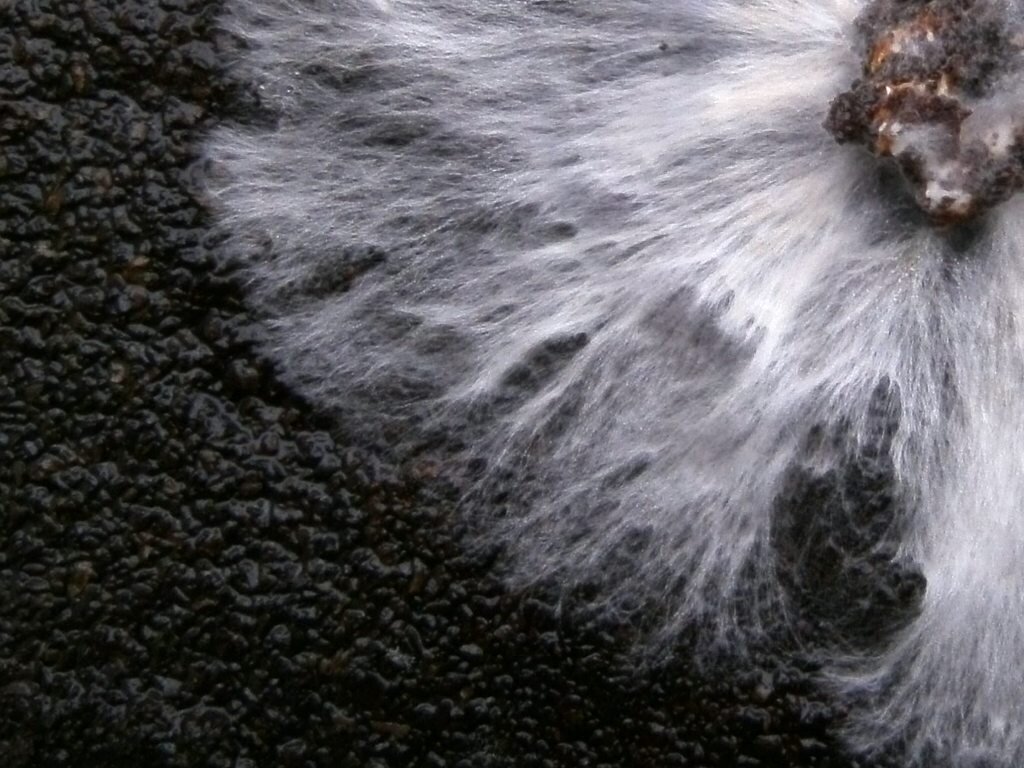
Mycelium
Building with mushrooms
My research into mycelium was to explore the idea of growing building blocks as a new and eco friendly building material.
Mycelium can grow into soil and most organic waste products. It cleans and nourishes the substrate it grows into and has been proven to work as a bio-filter, absorbing oil from contaminated soil and controlling levels of E.Coli in water (Taylor, Alex & Stamets, Paul. (2013). Implementing Fungal Cultivation in Biofiltration Systems - The Past, Present, and Future of Mycofiltratioin.)
However it was the structurally binding capabilities of the mycelial roots that drove the research into using mycelium to create a building material.
Once a substrate is inoculated with fungal spores, the mycelial roots grow quickly into a dense root structure that solidifies the aggregate. Once bonded to a substrate, these blocks have a similar structural integrity to that of high density styrofoam; lightweight, effective insulator, performs will under compression. However, additional benefits in a mycelial block are that it performs well against fire, and when discarded, will decompose and provide nutrients back into the ground.
Aggregates need to be on an organic nature. Used coffee grinds are perfect, they already a waste product, are high in nitrogen and loose enough to be packed into pre-formed moulds. (above) The mycelial roots can be seen growing through the coffee grinds.

Forming.
Conversations with Peter Roberts, an engineer from New York State were established over his system of interlocking cement blocks that, once assembled created a geodesic dome (see images) that was self supporting with no reinforcement required.
The concept for the use of mycelium was to grow building blocks in pre-formed moulds, based on Mr Roberts’ tessellating system that could then be formed with minimal equipment or specialist skilled labour.
The interlocking system was adapted into a less complex form for purposes of experimentation in growing the mycelium blocks.
Illustration courtesy of Peter Roberts http://masonrydesign.blogspot.co.uk/2010_08_01_archive.html
Growing a building block.
Based on the tessellating structural design by Peter Roberts a mould was formed to begin growing the mycelium in.
A 1cm layer of used coffee grounds, collected from a local cafe, was evenly distributed across the bass of the mould. Pieces of card, already inoculated with the mycelium from some oyster mushrooms, were then placed into the coffee. This mould was then wrapped in a black plastic bag to simulate a green house while keeping light out.
It took just 3 days for the mycelium to begin growing into the coffee. A bacteria threatened to take over and halt the growth of the mycelial roots, however the mycelium proved stronger and managed to clear the bacteria from the coffee grinds. 30days from the initial inoculation, the form was complete and was removed from the mould.
Conclusions in material testing proved that mycelium as a structural building block on its own would fail. However, used in a self supporting building system, ie a vault, mycelium could be used for its other recognised properties in insulation and bioremediation.



